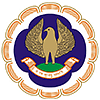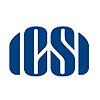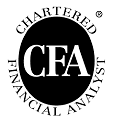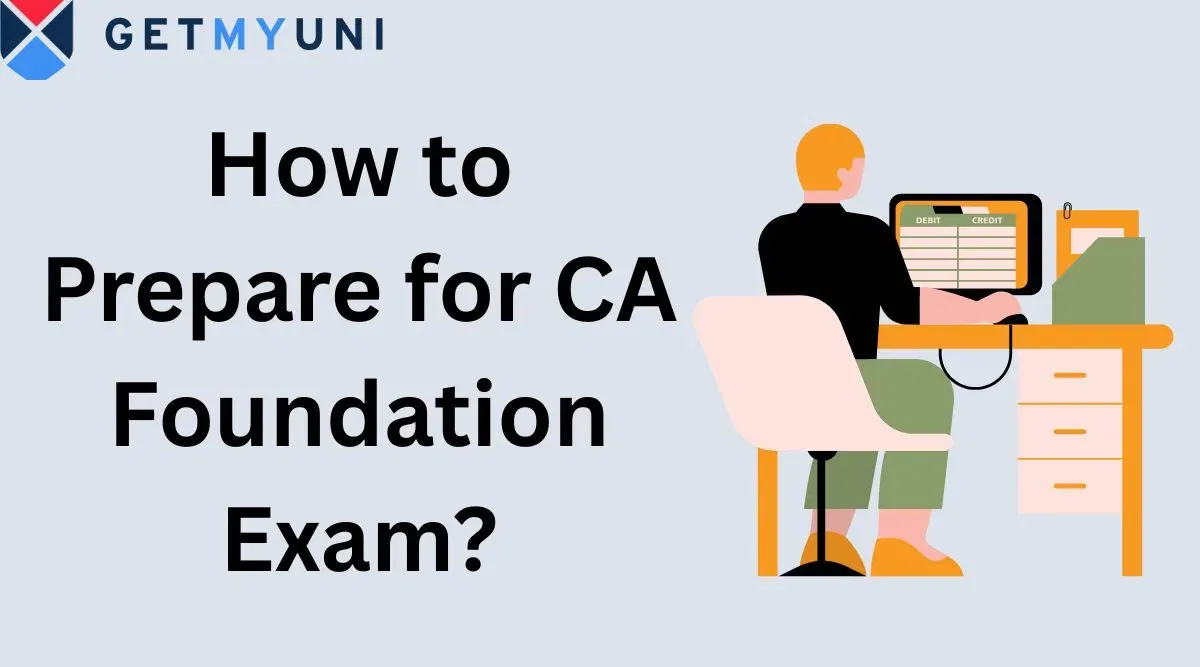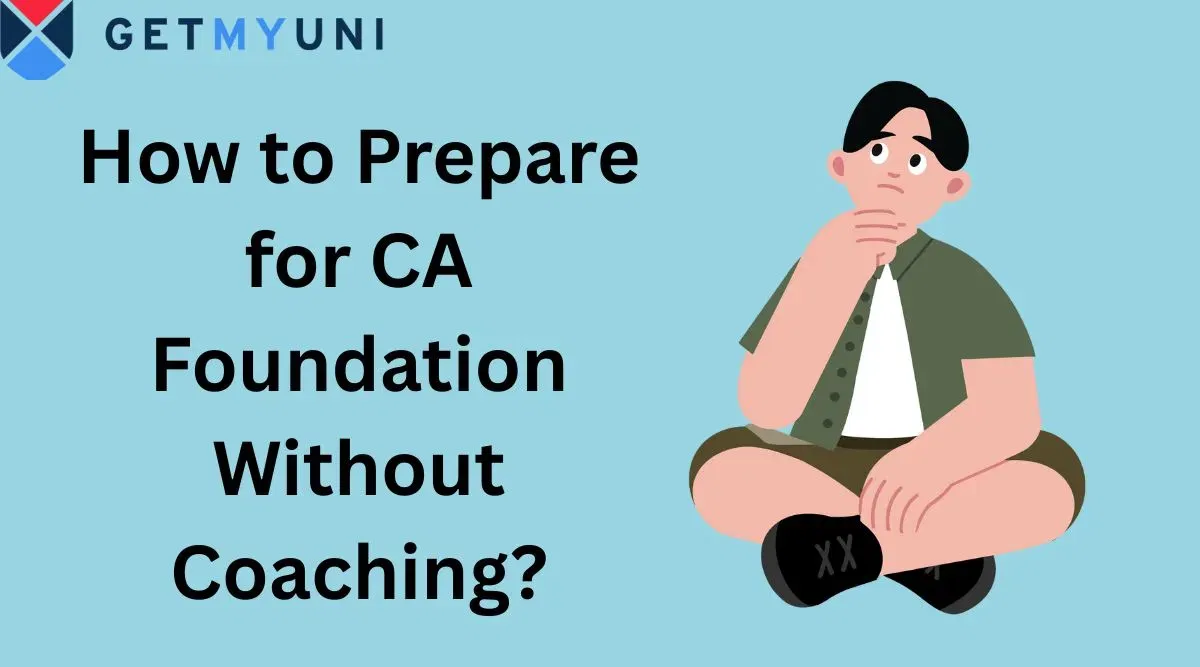
Table of Contents
CA Foundation syllabus 2025 is released by the Institute of Chartered Accountants of India. Applicants who wish to appear for CA Foundation 2025 need to follow the official syllabus. The exam includes four papers as CA foundation subjects. Students must have a good idea of the subjects in the CA Foundation.
The Institute of Chartered Accountants of India (ICAI) releases the CA Foundation syllabus 2025 as part of the new education and training plan. Candidates preparing to take the CA Foundation 2025 exam must be aware of the latest revisions and additions to the syllabus. The CA Foundation syllabus for the new system is available on the official ICAI website, icai.org.
CA Foundation 2025 Syllabus PDF Download
Candidates can download the syllabus for CA Foundation 2025 and see the subjects for CA Foundation from the link given below. The syllabus PDF for the CA Foundation examination has been issued on the official website by the authority.
| Subject | CA Foundation Syllabus 2025 PDF Download |
| CA Foundation Exam Syllabus | Download PDF |
CA Foundation New Syllabus Papers 2025
The CA Foundation 2025 exam will be commenced for the January session. Applicants must check the paper-wise marking details mentioned in the tabular below for applicants reference.
| Sr. No | Paper Name | Marks | Type of Questions |
|---|---|---|---|
| Paper 1 | Accounting | 100 Marks | Subjective |
| Paper 2 | Business Laws | 100 Marks | Subjective |
| Paper 3 | Quantitative Aptitude: Part A: Business MathematicsPart B: Logical ReasoningPart C: Statistics |
100 Marks Part A: 40 MarksPart B: 20 MarksPart C: 40 Marks |
Objective |
| Paper 4 | Business Economics | 100 Marks | Objective |
Also Read: CA Foundation Study Material 2025
CA Foundation Syllabus 2025 Highlights
CA Foundation Syllabus 2025 highlights are tabulated below for easy reference. The details shared in the table will help the students in learning about the ICAI CA Fpundation examination in detail.
| Category | Description |
| Name of the Exam | Charted Accountancy(CA) Exam |
| Exam Conducting Body | ICAI |
| Exam Mode | Online |
| Number of Papers |
Foundation - 4 Intermediate - 8 Final - 8 |
| Different Levels of Exams |
Foundation Intermediate Final |
| Frequency | Twice a year: May, November |
| Number of attempts | Multiple |
Read More: CA Foundation Exam Centre
CA Foundation Syllabus 2025
The ICAI syllabus for CA Foundation focuses on the application, understanding, and information of chartered accountancy. Understanding the CA Subject Foundation syllabus 2025 is an important step for candidates who want to crack the exam.
Some of the important CA Foundation subject names as per the CA Foundation new syllabus that will be tested have been listed below. Here are the CA Foundation course subjects:
- Principles And Practice Of Accounting
- Business Laws And Business Correspondence and Reporting
- Business Mathematics, Logical Reasoning, and Statistics
- Business Economics And Business And Commercial Knowledge
The topics for each of the CA Foundation Course syllabus 2025 based on each of the papers candidates will be attending have been tabulated below.
CA Foundation Subjects 2025 for Paper 1: Principles & Practice of Accounting
CA Foundation subjects 2025 for paper 1 will test students on the principles and practices of accounting. Students can look for CA Foundation pdf but it has been listed in the table below:
| Chapters | Topics |
| Theoretical Framework |
Meaning and Scope of accounting Accounting Concepts, Principles, and Conventions Accounting terminology - Glossary Capital and revenue expenditure, Capital and revenue receipts, Contingent assets and contingent liabilities Accounting Policies Accounting as a Measurement Discipline – Valuation Principles, Accounting Estimates. Accounting Standards – Concepts and Objectives. Indian Accounting Standards – Concepts and Objectives. |
| Accounting Process |
Books of Accounts Preparation of Trial Balance Rectification of Errors. |
| Bank Reconciliation Statement | Introduction, reasons, preparation of bank reconciliation statement |
| Inventories | Cost of inventory, Net realizable value, Basis, and technique of inventory valuation and record-keeping. |
| Concept and Accounting of Depreciation | Concepts, Methods of computation and accounting treatment of depreciation, Change in depreciation methods. |
| Accounting for Special Transactions |
Bills of exchange and promissory notes Sale of goods on approval or return basis Consignments Average due Date Account Current |
| Final Accounts of Sole Proprietors | Elements of financial statements, Closing Adjustment Entries, Trading Account, Profit and Loss Account, and Balance Sheets of Manufacturing and Non-manufacturing entities. |
| Partnership Accounts |
Final Accounts of Partnership Firms Admission, Retirement, and Death of a Partner including Treatment of Goodwill Introduction to LLPs and Distinction of LLPs from Partnership. |
| Financial Statements of Not-for-Profit Organizations |
Significance of Receipt Payment Account Income Expenditure Account Balance Sheet Difference between Profit and Loss Account and Income and Expenditure Account Preparation of Receipt and Payment Account Income and Expenditure Account and Balance Sheet. |
| Introduction to Company Accounts |
Definition of shares and debentures Issue of shares and debentures, forfeiture of shares, re-issue of forfeited shares Statement of Profit and Loss and Balance Sheet as per Schedule III to the Companies Act, 2013. |
Also Read: CA Foundation Preparation Tips
CA Foundation Subjects 2025 for Paper 2: Business Law & Business Correspondence and Reporting
CA foundation law syllabus for paper 2, which will test students on business law and business correspondence reporting.
| Chapters | Topics |
| Section A: Business Law | |
| The Indian Contract Act, 1872 |
An overview of Sections 1 to 75 covering the general nature of contract, considerationother essential elements of a valid contract performance of Contract breach of contract Contingent and Quasi Contract. |
| The Sale of Goods Act, 1930 |
Formation of the contract of sale Conditions and Warranties, Transfer of ownership and delivery of goods Unpaid seller and his rights. |
| The Indian Partnership Act, 1932 |
General Nature of Partnership Rights and duties of partners, Reconstitution of firms Registration and dissolution of a firm. |
| The Limited Liability Partnership Act, 2008 |
Introduction- covering nature and scope Essential features, characteristics of LLP Incorporation and differences with other forms of organizations |
| The Companies Act, 2013 |
Essential features of the company corporate veil theory Classes of companies types of share capital Incorporation of the company Memorandum of Association Articles of Association The doctrine of Indoor Management |
| SECTION B: Business Correspondence and Reporting | |
| Communication |
Types Directions Network Process Problems Barriers Types of Communication Interpersonal Skills Listening Skill Emotional Intelligence Sample Questions with Answers Exercises. |
| Sentence Types (Direct-Indirect, Active -Passive Speech) | (i) Sentence: Definition(ii)Types of sentences as per connotations
Assertive sentences Interrogative sentences Imperative sentences Exclamatory sentences Optative sentences (iii) Sentence StructureSubject and Predicate Verb (Auxiliary, Finite) Object (Direct, Indirect) Complement Adjunct or Adverbial Clause Structure Types of Clauses - Independent clauses- Dependent clauses- Relative or noun clauses(iv) Types of sentencesSimple sentence Compound sentence Complex sentence Compound-complex sentence (v) Direct-Indirect SpeechIntroduction Procedure for converting Direct speech into Indirect speech - Rules for converting Direct speech into Indirect speech- Change in pronouns- Change in tenses- Change in modals- Changes for Imperative sentences- Changes for Exclamatory sentences- Changes for Interrogative sentences- Punctuation in Direct speechRules for converting Indirect speech into Direct speech vi) Active Passive Voice: IntroductionUsage: Active vs. passive voice Reasons for using Passive voice Changing Passive voice to Active voice Changing Active voice to Passive voice Suggestions for using Active and Passive voice vii) Verbs Voice Active or passive(viii) Exercises |
| Vocabulary Root Words, Synonyms, Antonyms, Prefixes, Suffixes), Phrasal verbs, Collocations, and Idioms. |
Introduction Significance of improving vocabulary How to improve vocabulary Root words Synonyms and Antonyms Words formed by using Prefixes Words formed by using Suffixes Phrasal verbs Collocations Idioms Exercises |
| Comprehension Passages |
Introduction to Comprehension Passages Points to Ponder Sample Passages with answers Exercises |
| Note Making |
Introduction to Note Making Significance of Note Making Detailed Format Heading(Title) Sub-heading-Indentation- Points-Use of abbreviations-Summary-Content-ExpressionSteps to Comprehend and summarize a text Helpful Hints Sample Passages with Notes Exercises |
| Introduction to Basic Writing |
Introduction Process of writing Styles of Writing Significance of writing skills for students Writing Conventions Characteristics of good writing Do’s and Don’ts of good writing |
| Précis Writing |
What is Précis writing? Features of good Précis writing How to write a Précis Do’s and Don’ts of Précis writing Examples (Passages with Précis) Exercises |
| Article Writing |
What is an Article? Essential elements of Article Writing Detailed Format a) Title b) By- Writer’s Name c) Body- Introduction- Main Idea-Support- Conclusion d)Sample Articles e)Exercises |
| Report Writing |
What is a Report? Essential elements of Report Writing Kinds of Reports a) Reporting for a Meeting/Assembly b) Reporting for a Newspaper c) Reporting for a MagazineDetailed Format for above a) Title b) By- Writer’s Name c) Place, Date d) Body- What- When- Where- Who- Howe) Tips and Conventions of Report Writing f) Sample Reports g) Exercises |
| Writing Formal Letters |
Types of Letters a) Circularsb) Complaints c) Memos d) Promotional Content e) Sales f) Recovery/RemittancesDetailed format for (i) above a) Date b) Salutation c) Subject d) Body of the letter- First paragraph- Second paragraph e) Complimentary ClosurePoints to Remember Sample Letters Exercises |
| Writing Formal Mails |
How to Write a Formal Mail? Writing Effective Emails Essential elements of Mails a) Subject line b) Formal Greetings c) Target Audience(Reader) d) Clarity and Conciseness e) Formal Closing f) Proofreading g) FeedbackTips and Conventions of Mails Sample Mails Exercises |
| Resume Writing |
Essential Elements of Resume a) Name and contact details b) Objective Summary c) Academic Qualifications and Achievements d) Co-curricular Achievements e) Training Programs attended/completed f) Strengths g) Interests/Hobbies) DeclarationSignature Resume Writing Tips and Conventions Sample Resumes Exercises |
| Meetings |
Notice Agenda Drafting minutes Action Taken Report |
Must Practice: CA Foundation Previous Year Question Paper
CA Foundation Subjects 2025 for Paper 3: Business Mathematics, Logical Reasoning, and Statistics
CA Foundation syllabus for paper 3, which tests students on business mathematics, logical reasoning, and statistics.
| Chapters | Topics |
| Section A: Business Mathematics | |
|
Ratio and Proportion, Indices and Logarithms |
Ratio and Proportion (Business Applications related to Ratio and Proportion) Laws of Indices Exponents and Logarithms and Anti Logarithms. |
|
Equations and Matrices |
Equations: Simultaneous linear equations up to three variables, Quadratic and Cubic equations in one variable. Matrices: Algebra of Matrices, Inverse of a Matrix and determinants, solving system of equations by Cramer’s Rule (involving not more than three variables). |
| Linear Inequalities with Objective Functions and Optimization w.r.t. Objective function. |
- |
|
Time value of Money |
Simple Interest Compound interest Depreciation Effective Rate of Interest Present Value Net Present Value Future Value Perpetuity Annuities Sinking Funds Valuation of Bonds Calculating of EMI Calculations of Returns: a) Nominal Rate of Return b) Effective Rate of Return c) Compound Annual growth rate (CAGR) |
| Permutations and Combinations | Basic concepts of Permutations and Combinations: Introduction, the Factorial, Permutations, results, Circular Permutations, Permutations with restrictions, Combinations with standard results |
|
Sequence and Series |
Introduction Sequences Series Arithmetic and Geometric progression Relationship between AM and GM Sum of n terms of special series |
|
Sets, Relations, and Functions |
- |
| Basic applications of Differential and Integral calculus | (Excluding the trigonometric applications)
Applications of Marginal Cost and Marginal Revenue etc. |
| Section B: Logical Reasoning | |
| Number series, Coding, and Decoding and the odd man out. | Blood Relations |
| Direction Tests | Syllogism |
| Seating Arrangements | - |
| Section C: Statistics | |
| The statistical description of Data |
Statistical Representation of Data Diagrammatic representation of data Frequency distribution Graphical representation of Frequency Distribution – Histogram, Frequency Polygon, Ogive, Pie-chart. |
| Measures of Central tendency and Dispersion |
Measures of Central Tendency and Dispersion: Mean Median, Mode, Mean Deviation Quartiles and Quartile Deviation Standard Deviation Coefficient of Variation Coefficient of Quartile Deviation. |
| Probability | Probability: Independent and dependent events; mutually exclusive events. Total and Compound Probability and Mathematical Expectation. |
| Theoretical Distributions | Theoretical Distributions: Binomial Distribution, Poisson distribution – Basic application and Normal Distribution – Basic applications. |
| Correlation and Regression |
Correlation and Regression: Scatter diagram Karl Pearson’s Coefficient of Correlation Rank Correlation Probable Error and Probable limits. Regression lines Regression equations Regression coefficients. |
| Index Numbers and Time Series |
Index Numbers: Uses of Index Numbers, Problems involved in the construction of Index Numbers, Methods of construction of Index Numbers. Time Series Analysis: Components of Time Series and Calculation of Trend by Moving Average Method. |
Must Attempt: CA Foundation Mock Test
CA Foundation Subjects 2025 for Paper 4: Business Economics and Business and Commercial Knowledge
CA Foundation for paper 4 will test students on business economics and business and commercial knowledge.
| Chapters | Topics |
| Section A: Business Economics | |
| Introduction to Business Economics |
Meaning and scope of Business Economics Basic Problems of an Economy and Role of Price Mechanism |
| Theory of Demand and Supply |
Meaning and determinants of demand, Law of demand and Elasticity of demand -Price, income and cross elasticity Theory of consumer’s behavior - Marshallian approach and Indifference curve approach Meaning and determinants of supply, Law of supply and Elasticity of supply. Demand Forecasting |
| Theory of Production and Cost |
Meaning and Factors of production Laws of Production – The Law of Variable proportions and Laws of Returns to Scale, Producer’s equilibrium Concepts of Costs- Short-run and long-run costs, Average and marginal costs, Total, fixed and variable costs. |
| Price Determination in Different Markets |
Various forms of markets – Perfect Competition, Monopoly, Monopolistic Competition Oligopoly Price determination in these markets. |
| Business Cycles |
Meaning Phases Features Causes behind these Cycles |
| Section B: Business and Commercial Knowledge | |
| Business and Commercial Knowledge – An Introduction |
Nature of Business Profession and Employment. Objectives of Business Economic and Non-Economic Activities Forms of Business Organizations. |
| Business Environment |
Micro and Macro Environment Elements of Micro Environment – Consumers/Customers, Competitors, Organization, Market, suppliers, Intermediaries Elements of Macro Environment – Demographic, Economic, Political-legal, Socio-cultural, Technological, Global Environment. |
| Business Organizations | Overview of selected Indian and Global Companies. |
| Government Policies for Business Growth |
Policies creating a conducive business environment such as Liberalization, Privatization, Foreign Direct Investment. |
| Organizations Facilitating Business |
Indian Regulatory Bodies – RBI, SEBI, CCI, IRDAI Indian Development Banks – IFCI, SIDBI, EXIM Bank, NABARD |
| Common Business Terminologies |
Finance and Stock & Commodity Markets Terminology. Marketing Terminology. Banking Terminology. Other Business Terminology |
Note: The ICAI suggests students read at least one financial newspaper and one business magazine regularly. They should also watch a business channel to remain updated about the development related to the commercial world.
Also Refer: CA Foundation Books
CA Foundation 2025 Exam Pattern
In addition to covering the topics provided above, candidates must also acquaint themselves with the CA Foundation exam pattern. A few of the highlights are given below.
- CA Foundation includes 4 papers
- Paper 1 and Paper 2 will have objective-type questions.
- Paper 3 and Paper 4 will have subjective-type questions.
- Every paper holds a maximum of 100 marks.
- The duration for each paper is 3 hours.
- The objective-type paper has a negative marking of -0.25 for wrong answers.
- The exam mode is offline.
- The medium of the paper is English/Hindi.
Read More: CA Foundation Exam Pattern
CA Foundation Eligibility Criteria
The eligibility criteria for the candidates to appear for the CA foundation examination are mentioned below.
- Candidates should have qualified for their 10th and 12th from a recognised board.
- Candidates should have passed 10th and 12th with a minimum of 50% and commerce as a major.
- Candidates with the above eligibility without any age limit can apply for the CA foundation course.
Must Refer: CA Foundation Eligibility Criteria
FAQs on CA Foundation Syllabus
Q: How many subjects are there in CA Foundation course?
There are four subjects in CA Foundation course. Here are the CA Foundation course subjects: Principles And Practice Of Accounting Business Laws And Business Correspondence and Reporting Business Mathematics, Logical Reasoning, and Statistics Business Economics And Business And Commercial Knowledge
Q: Is there any negative marking for CA Foundation Exam?
Yes, there is a negative marking in CA Foundation exams. For every incorrect answer, 1/4 points are deducted from the paper. Thus, students are advised to be careful while answering the questions in the examination hall.
Q: Is there any modification in ICAI for CA Foundation syllabus?
No, there is no alteration in the CA Foundation syllabus at present. However, there are some changes in the CA Final syllabus. The syllabus for the academic year 2025 is same as of 2024 session.
Q: Is CA Foundation syllabus very complicated?
It totally depends on candidates to determine the difficulty of the CA Foundation syllabus. Yet, with proper preparation and studying through Best books for CA Foundation exam students can crack it.
Q: How can we download the CA Foundation syllabus 2025?
To download the syllabus of the CA Foundation 2025 exam students are required to visit the official website and check for the syllabus relevant link. Once get they must click on it and the syllabus PDF will be displayed on the screen. Candidates must then downlod and save the PDF.





![Christ University Entrance Test [CUET]](https://media.getmyuni.com/assets/images/main/exam/cuet.png)



